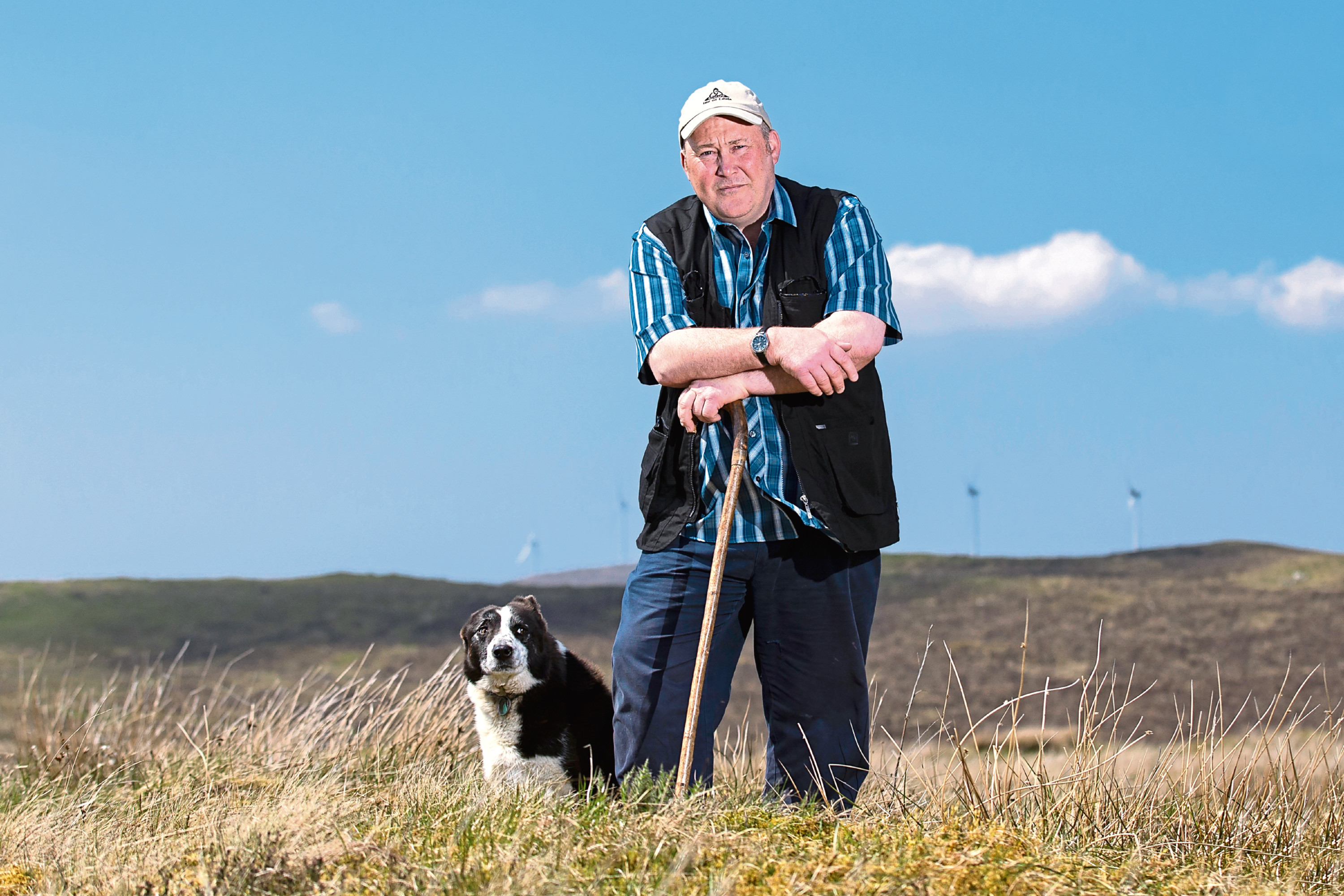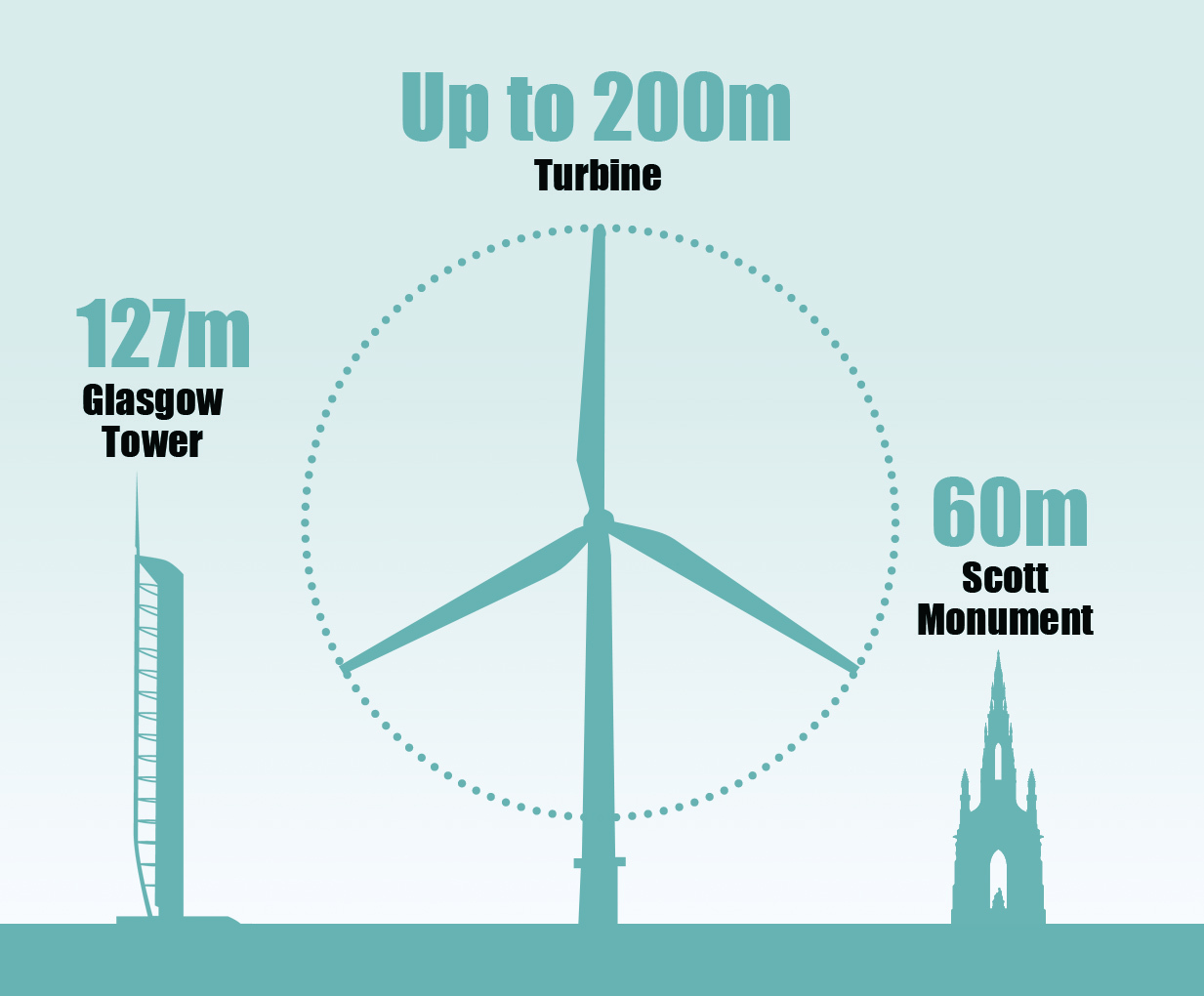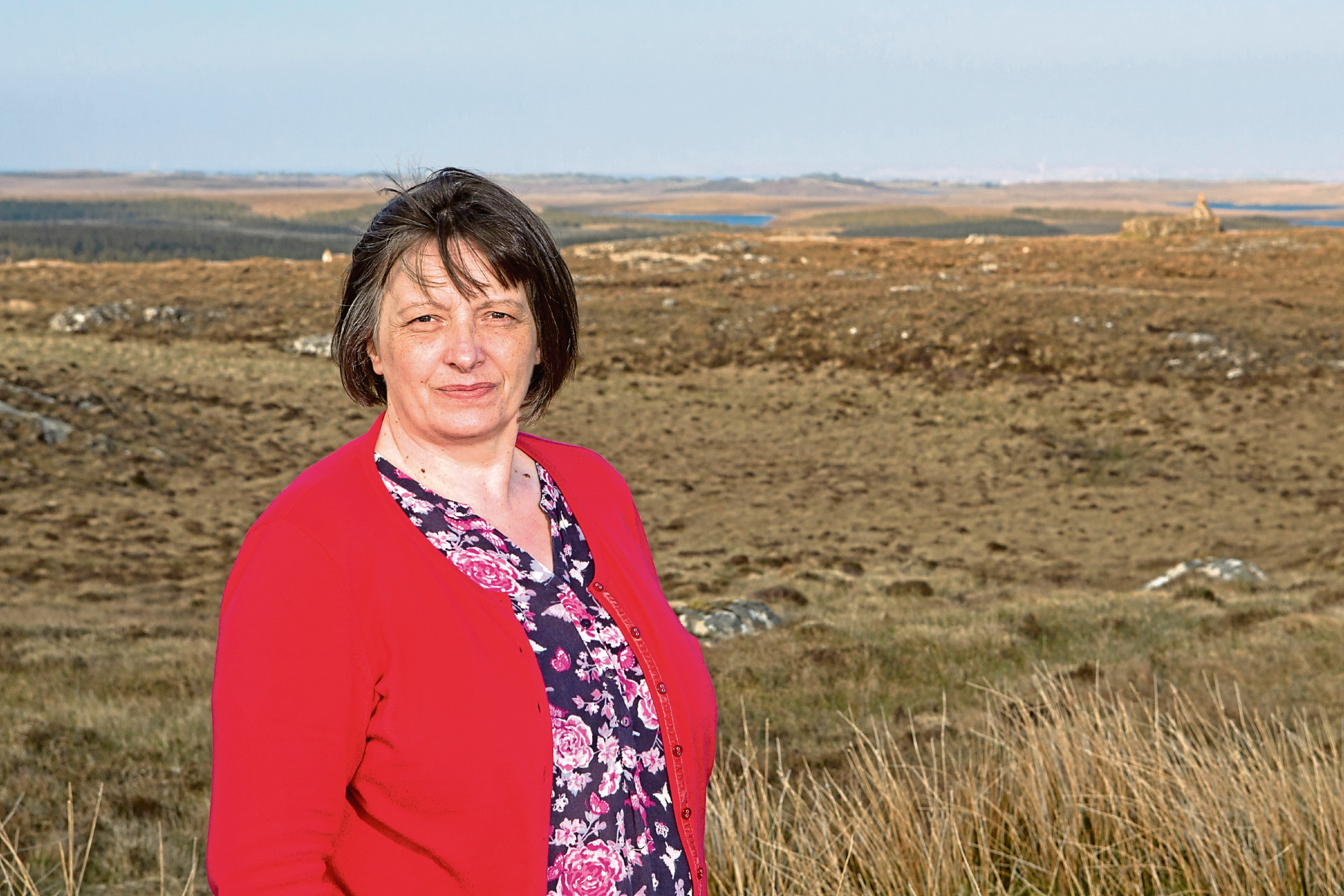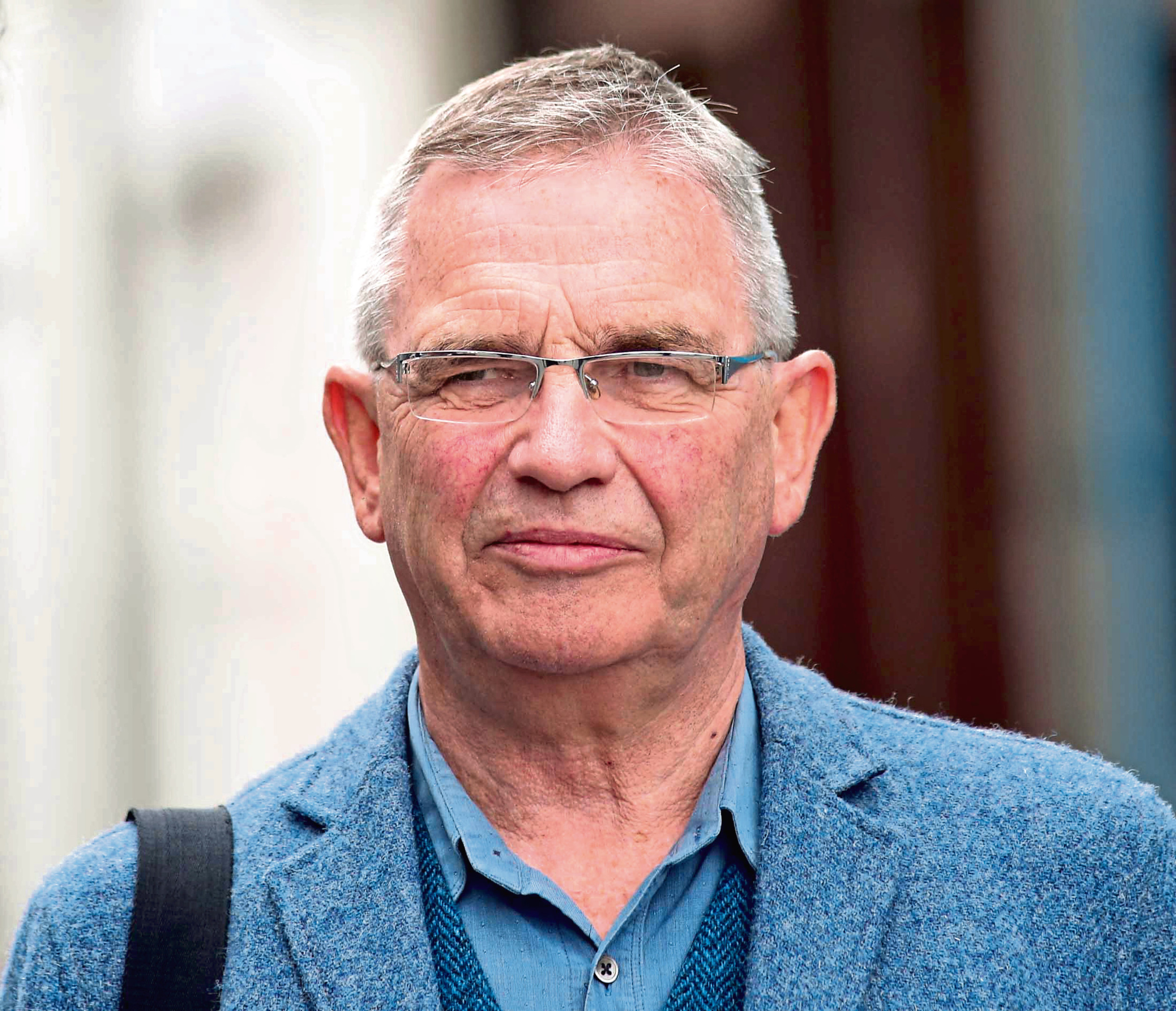
ON the lid of a water butt, John Martin is tracing the ear markings of his sheep, explaining how every crofter on Lewis once cut their own mark to help identify their animals.
John knows the Gaelic name for every earmark in Newvalley, a knot of houses above Stornoway, but admits he’ll probably be the last to do so with sheep more normally identified by plastic ear tags nowadays.
“Progress, I suppose,” he says.
Progress, or change, at least, is also coming to the peat moors rolling over the Hebrides as the islands begin to harvest another natural resource – wind.
Plans for windfarms on Lewis have been in the air for more than a decade but the debate surrounding them intensified this month when proposals to build the tallest turbines in the UK were unveiled.
EDF Energy revealed it was now considering 660ft-high (200m) “super turbines” for part of its two planned windfarms on the island – which would be around the same height as the top of the Queensferry Crossing.
John Martin points out the difference in height with the six existing turbines near his croft, which are 383ft (117m), is not the only consideration.
He says: “This is all about environmentally friendly energy but these turbines, at that height, are an ecological disaster in many ways.
“The peat acts as a sponge for these greenhouse gases but you are churning up so much of it to build the roads and foundations for turbines that size.
“It’s criminal – you can’t put the peat back and I don’t think the scale of these things will be understood until it is too late.”
John fears his livelihood will be “obliterated” with the three turbines proposed for his parcel of land.
“They say you can still use the land around the turbines but you can’t and the land they are offering by way of compensation is tiny and hopeless. We’ll be left with a garden – not a croft,” he said.
Holding down numerous jobs is the way of life for many on the island. A panel beater to trade, John says he will take his skills and head to the mainland if the turbines go ahead.
“There will be nothing left for me here. My family have all been crofters and I want to continue that even if it’s not here.”

The pro-windfarm local authority and the Stornoway Trust, which manages the common grazings around the island’s main town, have agreed a 70-year lease with EDF Energy for 36 of the 91 turbines which the French firm is planning on Lewis.
The trust says it has the backing of 10 of the 14 local grazing committees but John claims this does not necessarily represent the views of individual crofters.
He says: “I know this is just my view but it is a view from someone who knows every inch of these hills and knows this life.”
John says a number of local people are crofters in name only. “Too many people who look at the pot of money but don’t look at the impact on island life, our way of life.”
If EDF and its partner, Wood Group, opt for taller turbines at Uisinis in the south of the island and its other site just outside Stornoway then it would require new planning consents and consultations.
But planners on the island are about to receive a rival planning application for wind turbines on the same land where EDF already has permission to build.
In the latest twist to a saga that stretches back nearly 20 years a group of crofters are working up plans to build their own, smaller, windfarm.
They have asked the Scottish Government-backed Crofting Commission for support and they are also challenging the EDF lease through the Scottish Land Court.
Rhoda Mackenzie, who is leading the rival plan, says a community-led wind farm project would deliver millions of pounds in benefits for the islands.
The annual community benefit from the planned 36 EDF turbines outside Stornoway amounts to £900,000 but critics point out local good causes get the same amount of windfall every year from just three community-run turbines elsewhere on the island.
Rhoda says: “These are offshore wind turbines being plonked onshore. You will see them from all over the island.
“This land should be used for the good of the island.
“This is not about personal gain – it is about making sure that if our island is to change then it changes for the good of the people here – not shareholders in France.
“We’re talking about using the money to fix the gaps in social care provision, helping people set up their own businesses, that sort of thing.”
The major stumbling block for development to date has not been the difference in opinion on who should run the schemes – but grid capacity.
For any project to work a new subsea cable has to be laid between the Western Isles and the mainland so power can be exported to the national electricity grid.The UK Government and regulators need to be convinced the island schemes will be viable enough to justify the cost – estimated anywhere between £400m and £1 billion.
Brian Wilson, the former Labour MP and energy minister who lives on the island and is advising Wood Group on the community benefit aspect of its plans, says the interconnector should be the biggest issue exercising islanders.
“To paint this as some David versus Goliath battle is just not accurate and those opposed to the development know it.
“This has been going on for so long now and the reason for that, regardless of who operates the turbines, is the lack of a suitable connection to the mainland.
“No interconnector, no windfarms, no wave or tidal projects, nothing.
“We have been through this so many times now and the scale and cost of the interconnector need means there has to be involvement from the big players. It is a deception to pretend otherwise.”
Also keen to press the importance of the subsea connection is Iain Maciver, factor of the Stornoway Trust.
He says: “If we can’t have the cable, we can’t have any of the projects and we have lost out on an opportunity that will not be repeated again – the world will have moved on.”
Mr McIver says the community benefit will come through a 20% stake in the EDF project which the Stornoway Trust has an option on to buy once the windfarms are complete.
Renewable energy finance experts have questioned how the trust can raise the tens of millions of pounds to buy such a stake in project that they don’t have any control over, but Mr McIver insists it is possible. He says: “We have gone to financial experts and the clear view is that if it was on the market today and we were looking for finance then there are plenty institutions who would be keen to lend to us.”
Will Collins, project manager of Lewis Wind Power, the working name of the EDF and Wood Group alliance behind the two projects, says the proposed changes to turbine heights reflect the economics of getting the projects to work and technological change.
He adds: “If we move to larger turbines then we are likely to build fewer of them, meaning little change to the overall size of our two projects, and little impact on the amount of spare capacity on the interconnector for other developments.
“It remains the case that without the delivery of our two schemes there will be no interconnector to the mainland. And without a new cable there can be no further community projects connected to the grid.”
The next year will be a crucial one for the Lewis windfarm battle with the expected outcome of legal challenges, the rival planning application and the launch of a bid for a potential public subsidy for the turbines.
Meanwhile, John Martin looks at the clock and stretches his legs before walking out to his sheep.

Enjoy the convenience of having The Sunday Post delivered as a digital ePaper straight to your smartphone, tablet or computer.
Subscribe for only £5.49 a month and enjoy all the benefits of the printed paper as a digital replica.
Subscribe
